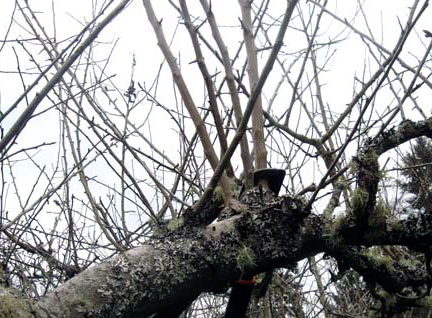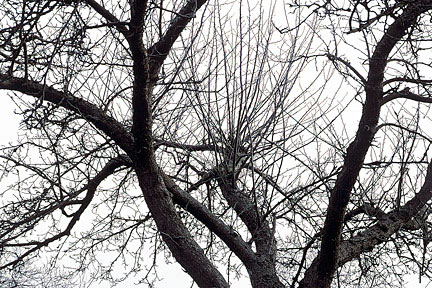Quiet Crow Bonsai
A Collection of Stellar Bonsai MusingsArticles
Technique: Maintenance Pruning Tips
Last article explored general pruning tips. We discovered that we prune in two stages maintain plant health and pruning for aesthetics.
When pruning a plant, do the maintenance pruning first, and the aesthetic pruning second. By doing the maintenance pruning first, you have removed the material that MUST be removed and it will help define how to prune for aesthetics.
Steps for Maintenance Pruning ensure we maintain the health of the bonsai. The following steps are what I use in my monthly review of each of my trees on my benches. Keeping all the general pruning tips in mind, let’s get started:
- 1.Prevent Spreading Disease
- Sounds just like tip number 1 from the General Tips for Better Pruning. But this time examine the tree for disease and insects. I found a very useful 60x pocket microscope with LED light on Amazon. Bugs move, dirt is stationary. Remove diseased material (Always sanitize your pruning shears in alcohol after each cut, whenever cutting diseased plants.) Shake a limb over a white sheet of paper, are the spots moving? Treat for insects or remove infested area. Burn, or otherwise dispose of diseased material. Do not leave it lying around since many diseases continue to spread for years from the debris.
- 2.Think twice, cut once.
- Again sounds just like tip number 3 from the last article. You cannot cut a limb back on. Start thinking about how you want the bonsai to look. Use a turntable and look at the tree from all sides several times.
- 3. Remove Dead Branches.
- lean out old leaves/needles from the tree’s interior. Dead or diseased limbs can be removed at any time of year, and should be removed at the earliest opportunity (especially diseased material). Sometimes it is difficult to identify dead limbs, and all too easy to cut off live limbs thinking they are dead. In these cases it is best to wait till bud break, so the dead/live limbs are easily distinguished from each other. On the other hand, you can (with some experience) learn to identify dead limbs by examining bark color, looking for shriveled bark, off-color buds, etc. As a last resort, you can scratch the bark and look for the green layer underneath the bark as a sign that the limb is alive.
Likewise some plants have major color changes during dormancy and/or may look dead until they break bud. A good example is some varieties of arborvitae that turn absolutely dead-brown in winter. Other plants may have suffered winter damage that prevents them from breaking bud at a normal time of year. I have seen hornbeam wait until late June to break bud. If in doubt, WAIT, remember step 2, you can’t cut it back on. - 4. Remove Unwanted Branches.
- Removing these unwanted branches helps you see the tree. Remove sucker branches. These branches may be growing straight up, or growth that is reverting back to root stock at the base of the tree or branches forming in crotches. Remove cross over branches. Remove branches that are damaged or malformed. If you are not sure, remember step 2 and wait.
- 5. Remove Congested Growth.
- Open up the interior of the tree. Not only does it improve the bonsai air circulation, ensures sunlight can reach the interior branches, it is needed for our next stage. Pruning for aesthetics.


